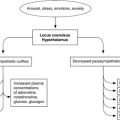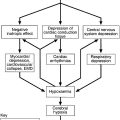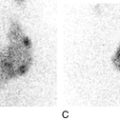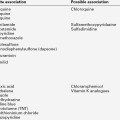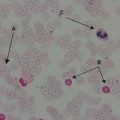CHAPTER 1
Uses of biochemical data in clinical medicine
William J. Marshall; Marta Lapsley
CHAPTER OUTLINE
INTRODUCTION
The science of biochemistry is fundamental to the practice of clinical medicine. Many diseases have long been known to have a biochemical basis and research in biochemistry is increasingly providing descriptions of pathological processes and explanations for disease at a molecular level.
As a result of the application of biochemical principles and techniques to the analysis of body fluids and tissues, clinicians have an extensive and ever-increasing range of biochemical investigations that can be called upon to aid clinical decision-making. Such investigations can provide information vital to the diagnosis and management of many conditions, including both those with an obvious metabolic basis (e.g. diabetes mellitus) and those in which metabolic disturbances occur as a consequence of the disease (e.g. renal failure). On the other hand, many conditions are successfully diagnosed and treated without recourse to any biochemical investigation, while there remain conditions in which it might be expected that biochemical investigations should be of value but for which appropriate tests are not yet available. For example, there are, as yet, no practical biochemical investigations to assist in the diagnosis and management of the major affective disorders (see Chapter 35), although there is considerable evidence that biochemical disturbances are involved in the pathogenesis of these conditions.
Biochemical analysers range from large, automated instruments capable of performing multiple tests on single serum samples to relatively simple instruments designed to measure only one or a few analytes. In general, they generate results quickly, reliably and economically. However, some tests, often more complex and expensive ones, are performed manually and may take longer to complete. Biochemical data are thus readily available to support clinical decision-making. Ordering a biochemical investigation is a simple procedure and there is no doubt that such investigations are often requested automatically, without regard for their potential value in the specific clinical setting. Clinical biochemists decry this but do themselves no favour by their use of the term, widely employed by clinicians, ‘routine investigations’ (usually meaning relatively simple investigations that are performed frequently) and even ‘routine laboratories’ (meaning the places where they are done).
Ideally, investigations should always be performed because there is a specific indication for them, that is, because it is anticipated that their results will provide information of benefit to the management of the patient. However, it cannot be denied that investigations requested for no specific reason can sometimes provide valuable information. Most clinicians are able to recall occasions when an unexpected result from a ‘routine test’ has provided the essential clue to the diagnosis in a difficult case. More often, the finding of an unexpectedly abnormal result may engender considerable anxiety and involve further investigations to elucidate its cause, only for it to transpire that the biochemical abnormality is of no clinical significance.
The potential range of investigations available to support the clinician is considerable, from simple low cost urine dip-stick tests to magnetic resonance imaging using hugely expensive equipment. There is an understandable tendency for clinical biochemists to think that biochemical investigations are pre-eminent among special investigations. In some conditions they are, in others they have no role, while in many, their value is greatly increased when their results are considered alongside those of other investigations, for example imaging. The clinician should be aware of the whole range of investigations that are available, but needs also to be able to appreciate their various advantages and limitations. The clinical biochemist, too, needs to be aware of the role of other investigations, so that he or she can view biochemical tests in context and advise on their suitability and the interpretation of their results in specific clinical circumstances. It has been the editors’ aim to ensure that this information is provided where relevant in this book.
The processes of acquiring and interpreting biochemical data are complex. Correct interpretation requires that the clinical context and reason for requesting the test are properly understood, otherwise the result has little value. This chapter explores the variety of potential ways in which biochemical data can be used in clinical practice.
SPECIFIC USES OF BIOCHEMICAL TESTS
Diagnosis
It has been said that diagnosis in medicine is an art, not a science, yet the process of diagnosis is amenable to scientific analysis. Making a diagnosis is the equivalent of propounding a hypothesis. A hypothesis should be tested by experiment, the results of which may support or refute the hypothesis, which can then be extended, modified or discarded in favour of an alternative, as appropriate. The validity of a clinical diagnosis is tested by observation of the natural history of the condition or its response to appropriate treatment or by the results of definitive investigations: the diagnosis will be confirmed if these are as expected from knowledge of previous cases. If they are not, it must be reviewed.
Clinical diagnosis is based on the patient’s history and clinical examination. Taking general and hospital practice together, it has been estimated that, in more than 80% of cases, a confident diagnosis can be made on the basis of the history or the history and clinical findings alone. Even when this cannot be done, it should be possible to formulate a differential diagnosis, that is, a list of diagnoses that could explain the clinical observations. The results of investigations may then lead to one of these being considered the most likely and providing a rational basis for treatment. Subsequent observation will indicate whether the diagnosis was correct.
Although not necessarily required for the management of an individual patient, it may be possible to extend the clinical diagnosis by further investigation to determine the pathogenesis of the condition and ultimately, its underlying cause. For example, measurement of serum troponin concentration may confirm a clinical diagnosis of myocardial infarction in a patient with typical chest pain and electrocardiographic abnormalities; angiography could be used to demonstrate coronary atherosclerosis prior to surgery or angioplasty; the finding of hypercholesterolaemia would indicate a causative factor for the atherosclerosis; a family history of premature heart disease would suggest that the hypercholesterolaemia was familial and DNA mutation analysis might reveal the underlying genetic defect.
The ideal diagnostic investigation would be 100% sensitive (all cases of the condition in question would be correctly diagnosed) and 100% specific (no individual without the condition would be wrongly diagnosed as having it). The concepts of specificity and sensitivity are examined fully in Chapter 2. In practice, the capacity of biochemical investigations to provide precise diagnostic information is extremely variable. At one end of the spectrum, the techniques of genetic analysis are making it possible to reliably diagnose inherited metabolic diseases in utero; at the other end of the spectrum, to take just one example, a decrease in plasma sodium concentration can occur in many different conditions and is, on its own, diagnostic of none of them.
Molecular genetic analysis has become a separate discipline in its own right and is a special case for the use of biochemical investigations for diagnosis. It is used to detect the presence of a mutation responsible for a specific disease. Even when possession of a mutation does not inevitably result in the development of a disease, its presence can indicate increased susceptibility to a condition. However, even individuals with the same genotype for a characteristic may differ in their phenotypes. But, although molecular genetics is a rapidly developing field, many genetically determined conditions, including inherited metabolic diseases, are still diagnosed on the basis of their biochemical phenotype.
With the exception of genetically determined diseases, the number of conditions in which biochemical investigations alone provide a precise diagnosis is very small. There are several reasons for this. First, biochemical changes are often a consequence of a pathological process that is common to many conditions. Thus, although tissue destruction leads to the release of intracellular enzymes into the plasma, few such enzymes are specific to any one tissue and tissue destruction can occur for many reasons, for example with ischaemia, exposure to toxins etc. Second, it also frequently happens that a biochemical variable can be influenced by more than one type of process. To cite a familiar example, plasma albumin concentration can be influenced by changes in the rates of synthesis and degradation of the protein and by changes in its volume of distribution, and the rate of synthesis in turn depends on substrate supply and hepatic function, among other factors. Third, even when a biochemical change is specific to one condition, it may not indicate its cause and this may need to be established before the condition can be treated appropriately. For example, the demonstration of a high plasma concentration of the thyroid hormone, tri-iodothyronine, is characteristic of hyperthyroidism, but this can be a result of several different thyroid diseases, and treatment appropriate for one of these may not be appropriate for another.
When a biochemical investigation is used for diagnosis, the result obtained from the patient will usually be compared with a reference range, that is, the range of values that can be expected in comparable apparently healthy individuals. The theory of reference ranges is discussed further in Chapter 2, but two points require particular emphasis here.
First, the natural variation of biochemical parameters is such that the ranges of concentrations of constituents of the plasma are likely to be narrower in an individual than in a group (even if well-matched to the individual). Second, for many biochemical variables, there is overlap, often considerable, between the range of values seen in healthy individuals and those characteristic of disease. Thus, a test result in a patient with a disease may fall into the range typical for healthy people and vice versa. This overlap stems in part from the fact that some organs have considerable reserve capacity. The liver, kidneys, pancreas and small intestine exemplify this. For example, in chronic kidney disease, renal function may still be sufficient to maintain normal homoeostasis with respect to body fluid composition, even when half the functional capacity of the kidneys has been lost. It should not, therefore, be surprising that simple measurements of function can yield normal results in patients with kidney disease. In chronic pancreatitis, biochemical evidence of functional disturbance (e.g. of malabsorption) usually only becomes apparent when at least 80% of the functional capacity of the pancreas is lost, although the characteristic of severe pain often occurs at an earlier stage. Similarly, disease of the small intestine by no means always results in malabsorption.
When previous measurements are available in an individual, test results can be compared with these values, rather than with a reference range. Indeed, biochemical investigations are sometimes requested to provide a ‘baseline’ against which to assess future results, particularly if there is risk of a particular complication developing or if a change can be anticipated from the natural history of the disease or the expected response to treatment. A change in a biochemical variable in relation to a previous result may be of significance, even if both results are within the reference range. Thus, a rise of creatinine concentration within the reference range may indicate a significant loss of kidney function, and may even indicate acute kidney injury if the rise has occurred rapidly. The concept of the critical difference between two results is discussed further in Chapter 2.
The capacity of a biochemical test to provide diagnostic information can be quantified by the calculation of a mathematical function known as the predictive value. As will be discussed in Chapter 2, the predictive value of a diagnostic test depends on the prevalence of the condition in the group of people to whom the test is applied. If a diagnostic test is used indiscriminately, its predictive value will be low.
The majority of biochemical investigations made for clinical purposes involve analysis of plasma or serum. However, changes in the concentration of analytes in these fluids do not necessarily parallel changes in intracellular or whole body content, and yet it may be these quantities that are more relevant to the underlying pathology. Furthermore, single measurements may not provide reliable information in non-steady-state situations, for example, the plasma concentration of thyroid stimulating hormone (TSH), which is typically very low in patients with thyrotoxicosis, may remain low for some weeks after treatment has rendered patients clinically euthyroid.
For whatever purpose biochemical data are used, it is essential that they are reliable and are available in time to be of use. Under some circumstances, it may be permissible to sacrifice some quality in order to obtain a result rapidly, but in general, every attempt should be made to minimize the influence of both analytical and preanalytical factors on the accuracy and precision of data. This topic is considered further in Chapter 2.
Management
Assessment of disease severity
Most biochemical investigations are quantitative, and the more abnormal a result is, the more likely it is that a pathological disturbance is causing it. Often, the extent to which a result is abnormal correlates well with the severity of a condition but this is not always the case. The diagnostic test may not reflect that aspect of the condition of greatest importance in terms of severity; thus two patients with hepatitis may have equally raised plasma aminotransferase activities (reflecting tissue damage), but the condition will be judged more severe if, in one patient, the prothrombin time is prolonged (reflecting impaired hepatic functional capacity). Furthermore, overall disease severity (in relation to its effect on the patient) is likely to depend on many other factors, including the nature of the condition itself, the patient’s age, previous state of health, the existence of other illness etc. For example, hepatitis due to infection with hepatitis A virus tends to have a good prognosis compared with that caused by hepatitis B or C.
Prognosis
In general, the results of biochemical tests are poor indicators of prognosis, but there are exceptions to this. For example, the plasma bilirubin concentration at the time of diagnosis in patients with primary biliary cirrhosis correlates well with outcome; a high plasma concentration of a-fetoprotein in a patient with testicular teratoma is of prognostic significance, but the concentration of paraprotein in a patient with myeloma is not. Other examples are discussed in the ensuing chapters.
One aspect of prognosis is the assessment of the benefits and risks of treatment. It has long been appreciated that different patients do not necessarily respond identically to the same drug. Many factors impinge on patients’ responses to drugs including, for example, nutrition or the concomitant use of other drugs. Genetic factors are also important, and often many different genes are involved. Pharmacogenetics (see Chapter 43) is the name given to the science relating the effects of genes on our response to drugs, and is a rapidly expanding field within molecular genetics that is likely to become established within the repertoire of diagnostic clinical biochemistry laboratories in the future.
Monitoring the progression of disease
Although biochemical data alone may be of limited use in diagnosis, serial measurements can be of considerable value in monitoring the course of a disease or its response to treatment. The more closely the variable being measured relates to the underlying pathological process or functional abnormality, the better it will be for this purpose.
However, the reason for a change in a biochemical variable is not always the most obvious (or hoped for), so that even if an observed change is as expected or desired, the result should be interpreted with care. For example, a decrease in urine protein excretion in a patient with glomerular disease may indicate resolution of the underlying condition, but it could also be a result of deterioration leading to a decrease in the glomerular filtration rate. Biochemical data must always be interpreted in the light of clinical assessment and the results of other relevant investigations, not in isolation. Nevertheless, intervention may sometimes be appropriate on the basis of a biochemical change alone, if this has been shown reliably to predict a significant clinical change, for example in hyperkalaemia in a patient with renal failure.
When serial biochemical measurements are used to follow the response to treatment, the failure of an expected change to occur may suggest that the treatment is inadequate or inappropriate, or even that the diagnosis is incorrect. In therapeutic drug monitoring (TDM, see Chapter 39), biochemical measurements may actually indicate a possible cause for non-response to treatment.
Biochemical investigations can also be used to detect the development of complications of diseases or their treatment before these become obvious clinically, and thus allow appropriate action to be taken before there is any clinical deterioration. They may even be used to prevent complications: for certain drugs, TDM allows presymptomatic detection of potentially toxic concentrations of the drug.
Screening
Screening for disease implies attempting to detect disease before it becomes manifest through the development of a clinical disturbance. Inherent in the concept of screening is that appropriate management of subclinical disease is of potential benefit to the patient. Screening can involve clinical assessment and laboratory and other investigations. For some conditions (particularly inherited metabolic diseases), screening may involve a single biochemical test. But the term is also used in relation to the performance of a range of biochemical tests (often combined with other types of investigation) in healthy people, in an attempt to detect any of a number of conditions, in the belief that a set of ‘normal’ results – that is, results within the appropriate reference limits – excludes these conditions. As will be seen in Chapter 2, considerable care is required both in the devising of screening tests and in their interpretation. While a set of ‘normal’ results may appear reassuring and may, indeed, exclude the presence of certain diseases, it may also convey a false impression and even delay the diagnosis of early disease. Because of the way in which reference ranges are defined, the more tests that are performed, the more likely it is that an ‘abnormal’ result (i.e. outside the reference limits) will be generated that is not related to the presence of disease.
A positive result in a screening test on its own should not usually be regarded as being diagnostic. When the prevalence of a condition in the population being screened is low, the predictive value of a positive result is often lower than is generally supposed. A positive result in a screening test must always be confirmed by further investigation. The use of direct methods (e.g. oligonucleotide probes, see Chapter 43) to detect mutations in DNA is an exception to this. Properly conducted, they are definitive with regard to the detection of mutations, although not necessarily for the development of disease.
Screening may be applied to a population, to groups sharing a common characteristic within a population or to individuals. According to the nature of the condition in question, screening may be carried out antenatally, shortly after birth, during childhood or during adult life. The strategy adopted will depend on the risk of the condition, the probability of its presence, the availability of suitable screening tests and, inevitably, the cost. The latter includes particularly the economic cost of the programme but also the personal cost to individuals, for example those who test ‘false positive’ (individuals identified by the programme but on further investigation found not to have the condition in question) and, with inherited diseases, the relatives of individuals detected by the programme.
Population screening
Economic and logistic considerations preclude the screening of whole populations for disease, although it has been advocated, for example, that all adults (some suggest only males, others males and females) should be screened for hypercholesterolaemia. Although this would undoubtedly lead to the identification of a significant number of individuals at greatly increased risk of coronary heart disease because of severe but asymptomatic hypercholesterolaemia, such a programme, however desirable, would be very costly, and it has been argued that resources would be better devoted to measures to improve the general health of the population, by encouraging a healthy diet and lifestyle.
Selective screening
Selective biochemical screening for disease is already practised extensively in developed countries. The neonatal screening programmes for phenylketonuria, congenital hypothyroidism, sickle cell disease and cystic fibrosis are the best known examples. With the advent of tandem mass spectrometry, it is possible to screen for many more conditions such as medium chain fatty acid oxidation disorders, some organic acidaemias and the commonest form of congenital adrenal hyperplasia, using a tiny quantity of blood and at reasonable cost. These complement the thorough clinical screening of the newborn for conditions such as congenital cataract, imperforate anus etc.
Where a condition is particularly common in a defined group, screening may be appropriate, even though it would not be for the population at large. Antenatal screening for Tay–Sachs disease in Ashkenazi Jews is one example.
For hypercholesterolaemia, selective screening is a more practicable procedure than population screening. It can be applied to people in whom there is a high probability of hypercholesterolaemia being present, for example members of families in which there is a history of familial hypercholesterolaemia or premature heart disease. Such screening can also be directed towards people already at increased risk of coronary heart disease because, for example, they are smokers or have hypertension or type 2 diabetes, whose risk would be increased further by hypercholesterolaemia. Other examples of selective screening are discussed in the relevant chapters of this book.
Individual screening
Examples of individual screening include antenatal screening of a fetus for an inherited disease when a previous child of the parents has been found to have the condition or when there is a strong family history of the condition. This has been practised for some time for certain inherited diseases, but the number for which it can be done is growing rapidly now that the mutations responsible for inherited diseases are becoming known. Although, undoubtedly, it will become possible to treat some of these conditions in utero, at present, antenatal screening is mainly aimed at detecting conditions with consequences so severe that it is considered appropriate to terminate the pregnancy if the genetic abnormality is present. Given this possible outcome, it is clearly essential that if the diagnosis is to rest only on the result of the screening test, this should provide accurate and unequivocal results.
Other uses of biochemical investigations
All the uses of biochemical investigations that have been discussed thus far are potentially of direct benefit to the patient. Other important uses include the provision of information for teaching, research and public health. Usually, this will relate to one of the categories discussed. Although such data may not be of immediate benefit to the patient, these areas are of immense potential benefit to the population, providing information fundamental to the advancement of knowledge. This use has ethical implications and is increasingly subject to scrutiny by bodies such as the network of research ethics committees in the UK. The use of biochemical investigations to assess organ function in potential transplant donors is an example of the use of investigations primarily for the benefit of other people. Data collection in specific disorders, such as for the UK Renal Registry for patients on dialysis, can help to improve the standard of care given to selected patient groups by comparing results achieved by different centres against pre-defined targets.
Extensive biochemical investigations are usually carried out during trials of drugs: these may be required as part of the assessment of a drug’s efficacy but are also essential for the detection of possible toxicity.
Investigations may also be performed for the benefit of the doctor rather than the patient. Few doctors have not been guilty at some time, of requesting biochemical tests for reassurance. The supposition is that if the results of a range of test results are within reference limits, then the conditions in which abnormalities are known to occur cannot be present. As has been emphasized above, this supposition is erroneous and any reassurance may be unfounded. Biochemical investigations should be requested for one of the reasons discussed in the relevant chapter of this book and not ‘routinely’. Neither should junior medical staff be put under pressure to request unnecessary tests to placate their seniors.
It is regrettable that there is an increasingly perceived need for doctors to carry out a comprehensive range of investigations in case of subsequent litigation. While this is understandable, it should not be necessary if investigations are requested and performed in response to the individual clinical circumstances. There will always be other investigations that could have been done, but no blame should be attached to a doctor who failed to carry one out if it was not indicated clinically, either on the basis of the known natural history of the disease or the predicted response to, and known complications of, treatment.
CONCLUSION
Biochemical data are used extensively in medicine, both in the management of patients and in research. But before an investigation is requested, the rationale for testing should always be considered. Automated analysers can perform many tests at a very low cost in relation to the total expenditure on healthcare, but the cost is not negligible. There may also be a cost to the patient. Repeated venepunctures to obtain blood for ‘routine’ tests are at best a nuisance, and at worst can, particularly in small children, cause a significant fall in the haematocrit. The laboratory handbook at one hospital of the authors’ acquaintance used to contain the following advice to junior medical staff: ‘If you need advice or time to think, ask for it; do not ask for a full blood count and measurement of “urea and electrolytes”.’ In common with other investigations, biochemical investigations should be requested to answer specific questions; if there is no question, the result cannot provide an answer.
Further reading
NCBI. One size does not fit all: the promise of pharmacogenomics, http://www.auburn.edu/academic/classes/biol/3020/iActivities/CGAP2/Pharmacogenomics%20Factsheet.htm; [Accessed 20.09.12].
A concise introduction to this topic.

